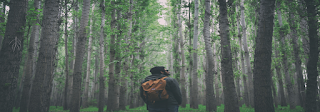This is one of the best tiger reserves of the country, known to have "friendly" tigers, and the chances of sighting one here are reasonably better than many other tiger reserves of India. Along with this Ranthambore has one of the richest flora and fauna making it an absolutely must-visit area
Nestled in the foothills of Vindhya and Aravali Hills, Ranthambore is famous for its tiger reserves and the variety of flora and fauna found. The Ranthambore National Park, along with the Ranthambore Fort and the surrounding hills and valleys, altogether make Ranthambore a traveler's delight. The place is a boon for wildlife photographers and is perfect for excursions and sightseeing. Safari Rides add to the adventure along with hot Rajasthani picks for shopaholics. With an area of 392 kilometers square, Ranthambore National Park is a natural habitat for a variety of exotic species. It is an absolute delight for birdwatchers and an ideal place to watch animals in their natural habitat.
The Ranthambore Fort, built in the 10th century, stands tall over the entire National Park. Built by the Chauhan Dynasty, the Fort is a UNESCO World Heritage Site. Located inside the fort is the majestic temple of Lord Ganesha, the Trinetra Ganesh Temple. Ganesha devotees flock to the temple throughout the year. The other two temples are dedicated to Lord Shiva and Ramlalaji respectively. Two Jain temples, devoted to Lord Sumatinath and Lord Sambhavnath are other attractions of the Fort. The Padam lake and the Surwal lake are two among many that are a haven for bird watching. The ideal time to visit these lakes is early morning. Located adjacent to the Padam lake is the Jogi Mahal, a red sandstone marvel. Kachina Valley, famous for locating panthers and bears, along with Raj Bagh Ruins and the surrounding deciduous forests altogether score brownie points for Ranthambore.
Best Time To Visit :
Ranthambore National Park remains open from October to June, with the winter months (October - December) being the best time to visit this place. October to April are the best months to visit Ranthambore to spot tigers. Summers are quite hot, however, chances of spotting tigers increase in the summers. The park remains closed during monsoons.
Places To Visit :
1. Jeep Safari :
Jeep Safari is the best way to explore the various zones of the Ranthambore National Park. Wildlife photographers and bird watchers often opt for these safaris to capture thrilling moments in the National Park. Jeep safaris need to be booked well in advance to ensure availability.
Jeep Safari
2 . Ranthambore Tiger Reserve :
Spread in an area of 392 sq. Km, the Ranthambore Tiger Reserve is one of the largest and famed tiger reserves in the country, famous for the magnificent Bengal Tiger found there. The Ranthambore Tiger Reserve derives its name from the Ranthambore Fort located in the region. Situated in the Sawai Madhopur district of Rajasthan, it forms a part of Project Tiger reserves, by the Government of India, set up in 1955. Ancient religious ruins found within the forest, surrounded by the rich biodiversity and aesthetically crumbling cenotaphs make Ranthambore Tiger Reserve a favorite spot for photographers, wildlife enthusiasts, and travelers.
Ranthambore Tiger Reserve
3 . Ranthambhore Fort :
Ranthambhore Fort is a magnificent fort erected by a ruler belonging to the Chauhan Royal family located in Ranthambhore in Rajasthan. The regal fort is said to have existed since the 12th century and is a perfect tourist attraction for those wanting to explore Royal Rajasthan. The splendid fort of Ranthambhore stands strong amidst dense forests that form the Ranthambhore National Park. The view of the fort from the national park and the view of the dense forest from the top of the fort are both worth seeing. As one explores the magnificent structure, they are bound to experience the magnificent vibe that the fort radiates in the warm sunlight of Rajasthan.
Ranthambhore Fort
4 . Padam Lake :
Padam Lake is the largest lake in the Ranthambore National Park. The water body is visited by most of the animals in the mornings. This is one of the few places where Chinkaras can be spotted. Most animals hunt around this lake which makes it the best location for wildlife photography. The Padam Lake is filled with Lotus bloom during monsoons, hence it was named Padam Talao.
Padam Lake
5 . Ganesh Trinetra Temple :
One of the most famous temples of Lord Ganesha is located atop the fort. The local post office receives and delivers thousands of invitation cards to the Lord Ganesha temple as people symbolically send the first invitation card for major functions like weddings, house warming, etc. to Lord Ganesh.
Also, people come here and make stone miniature houses near the temple, signifying a wish for a real house.
6 . Kacheeda Valley :
Kacheeda Valley is also inside the reserve. The panther population of the reserve resides here. You will have to reach this valley via the jeep safari. Panthers don't usually leave this area in order to avoid conflict with the tigers. Bears are also found here.
How To Reach :
1 . By Flight :
The nearest airport is Jaipur International Airport, around 160 km away from Ranthambore, after which you can travel from Jaipur to Sawai Madhopur via rail/road.
2 . By Road :
Ranthambore is connected to the major cities via Sawai Madhopur. However, Kota-Ranthambore is a prominent highway; the distance can be easily covered in 1.5 hours. Jaipur is also just 160 km from Ranthambore and can be reached in about 3 hours.
3 . By Train :
The nearest railway station is Sawai Madhopur Railway Station which lies on the Delhi-Mumbai Trunk Route. Sawai Madhopur Railway station is just 11 km from the national park and hence acts as a very convenient way to reach Ranthambore.









